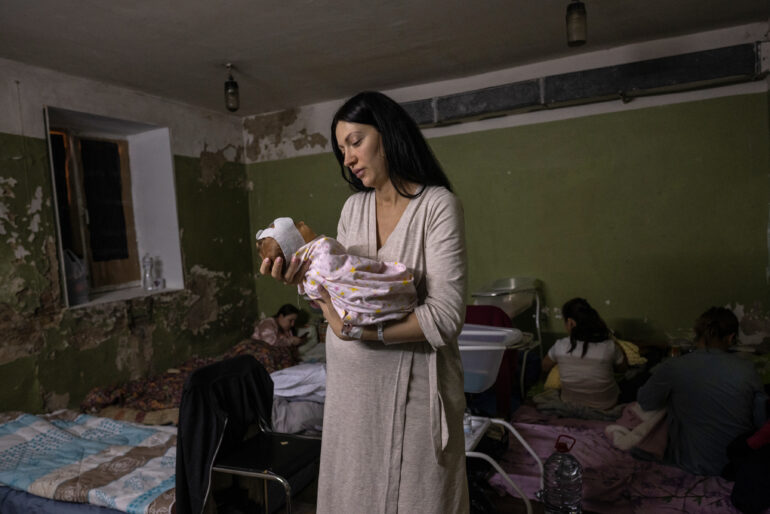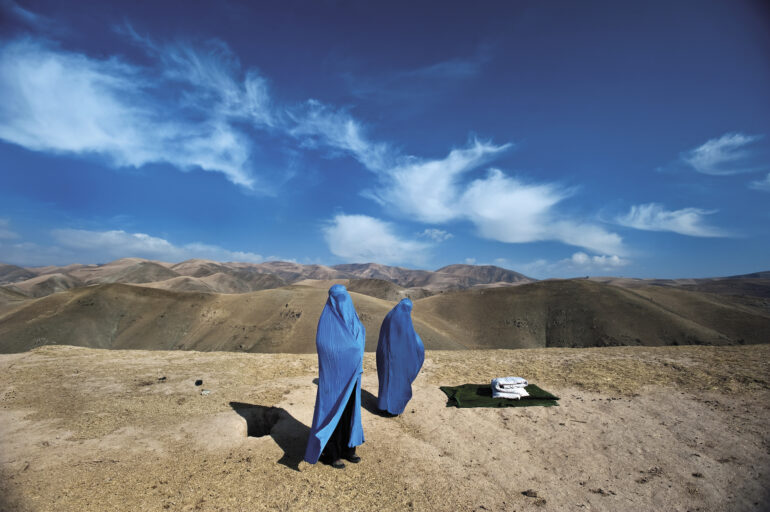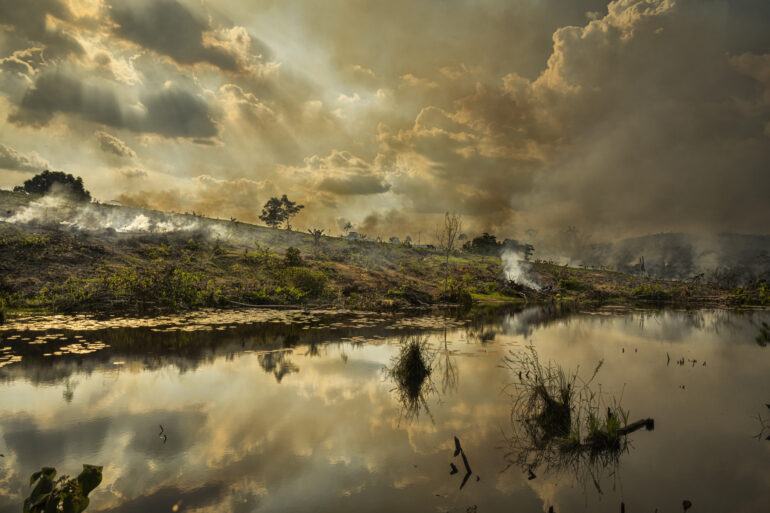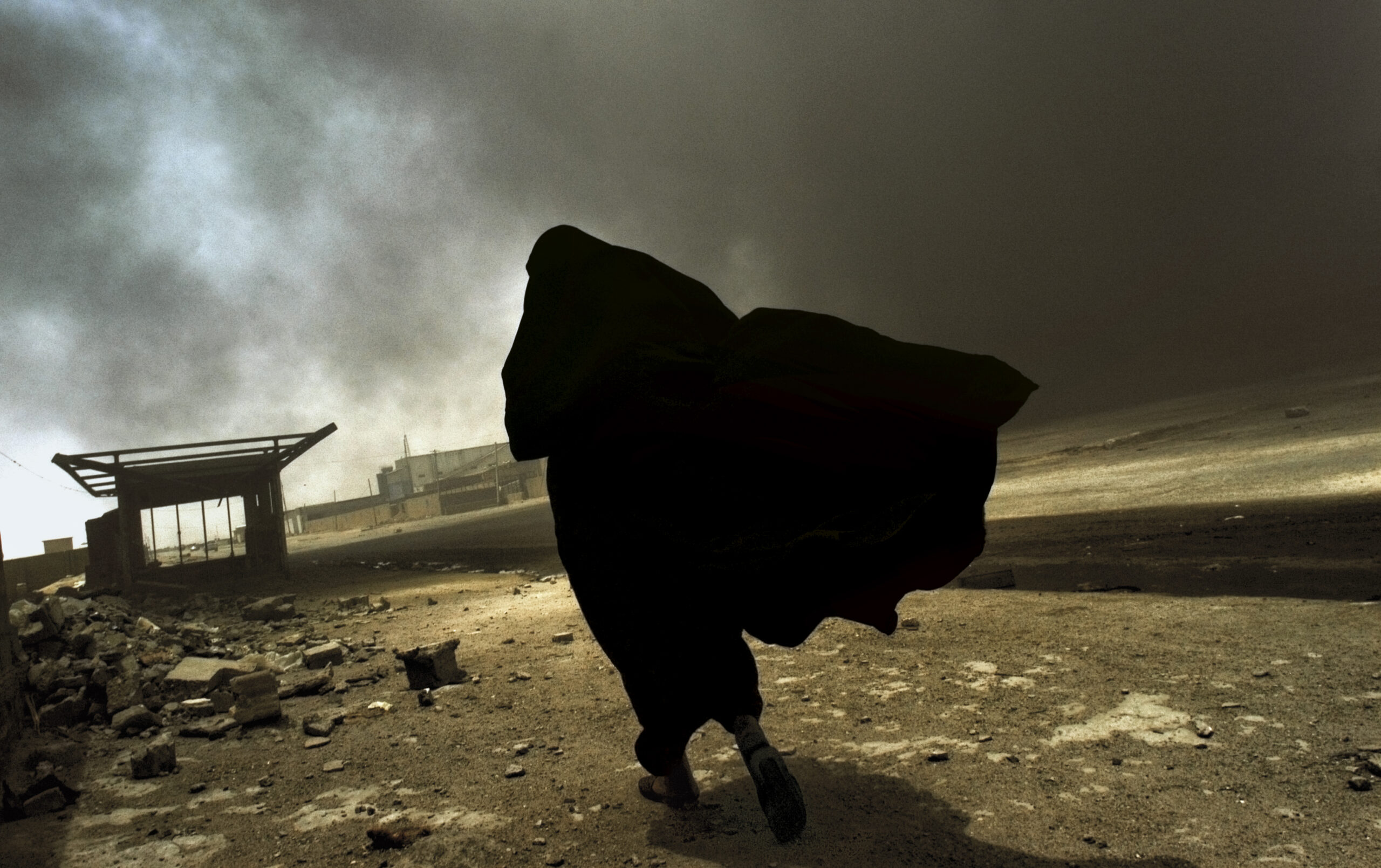Photographer Lynsey Addario is quite an inspiring photographer with all that she’s accomplished. In our interview with her last year, she talked about her work documenting climate change and the effects its had on people around the world. She talks about stuff like AI and so much more. Any photographer would be delighted to read it. And you can right below.
All images by Lynsey Addario. Used with permission. Please visit her website and follow her on Instagram. The commencement speech is being republished here with permission from SVA.
Thank you. Thank you, Brian Palmer for that introduction. Thank you, President Rhodes, Vice President Rhodes, members of the board, SVA faculty, staff, for this honor today.
Hello Class of 2023. Congratulations to you all, I’m so proud. Congratulations also to the parents and other supporters in the audience today. I know that for many of you, today is a dream come true. Please know that your graduates will spend the rest of their lives being grateful for your love and encouragement.

Standing up here today is more terrifying than being on the frontlines of Ukraine. Usually, when I’m invited to address an audience, it is to speak about my experiences as a war photographer. Which is not surprising since I’ve spent the last twenty-five years covering conflict around the world, and most recently, Ukraine where I returned two weeks ago.
Some of you may have seen my work that was so beautifully exhibited in the SVA gallery, thanks to Francis Di Tommaso and the other staff of SVA and the Chelsea Gallery. Thank you so much.
Today, you sit where I once did. You’ve likely spent the last few years thinking about the work you want to create, and the impact you want to make with your art.
You came to SVA because you knew you wanted to use your art to say something meaningful. Your hopes and dreams and plans for the future are all wrapped up in those intentions.
As I struggled to come up with how to shape my talk to you today, I wondered how many commencement speakers of late have used ChatGPT to write their speeches. And if they did, and if I did, how would you even know? That question is going to become more and more central to the work you are doing.
What is real, and what is an amalgamation of reality created by artificial intelligence? Will personal authenticity be the only separation between your art and AI-generated art?
Up until very recently, one way of ascertaining whether something was true, was simply with a photograph. This is no longer the case. As visual artists, you are in some way trying to be truth-tellers. And you must think about how you will convey the truth.
…I wondered how many commencement speakers of late have used ChatGPT to write their speeches. And if they did, and if I did, how would you even know? That question is going to become more and more central to the work you are doing.
How will you ascertain for your audience that the truth or the message you want to tell is the message that is actually being received? You’re now on the verge of going out into the world to make a difference. And you have a great responsibility with your education and privilege to create impactful art.
And perhaps some of you intend to use your art to advocate for justice and equality, or whatever it is you believe – or however it is you believe you can positively affect the world around you.
It is not an easy path you have chosen. You’ll face skepticism, indifference, and rejection, with the added bonus of making as much money as I did in the 1990s as a waitress in Papalini’s (sp) in the Village.
But I stand here today as proof that this difficult path is worth it. And I hope I can impart a little wisdom that might serve you well as you embark on your journey.
The great Mexican painter Frida Kahlo once said, “the only thing I know is that I paint because I need to.” I didn’t truly understand that as I embarked on my career.
Early on, I felt the thrill of actually getting paid to do something I loved. I got my first job at a newspaper in 1996 by talking myself onto the set of Evita where Madonna was filming in Buenos Aires. I was paid ten dollars a picture for the next five months, and grateful for every assignment.
As visual artists you are in some way trying to be truth-tellers. And you must think about how you will convey the truth.
But I also felt something more profound was missing. Then one day, I went to an exhibition of Sebastião Salgado, the Brazilian photojournalist. His work focused upon vulnerable people and places throughout the world, including the inhabitants of the Amazon whose lands were being exploited for commercial gain.
In that exhibit, it was clear that the subjects’ lives were unimaginably hard, yet they didn’t come across as victims or casualties. Through Salgado’s lens they looked dignified, beautiful even.
I’d known that photographs could draw the viewer in, but until then I hadn’t personally experienced the visceral impact photographs could have. Suddenly, I understood how art — my art — could be used to document, to inform, and to instigate change. How something as simple as a picture could evoke emotions and create a coaction between a subject and viewers who were worlds apart.
Surrounded by Salgado’s work I felt the rush of tears down my cheeks as I was overwhelmed with emotion. I knew, I knew that I had to do some sort of photography. I’m certain that most, if not all of you, have some degree of need to create your art.
And you may not know exactly what you want to do, but you feel a passion and a burning, a fire burning inside you. That is essential. But as you head out into the world, it’s easy to be consumed with what you do, instead of why you’re doing it.
Be careful because that need, the why you’re doing it, is the fuel that keeps your inner fire burning. It is the essence of the artist’s being. How do you foster that need? It takes dedication, commitment.

It requires an indefatigable intellectual curiosity, building a community of peers, the people sitting next to you, who challenge and inspire you, constantly searching for new ideas that push your boundaries.
And as graduates from SVA, you have demonstrated that you have the work ethic and the tools, whether they’re pencils or brushes, cameras, software, computer keyboards. Onto the next stage: the pursuit of your art in the real world.
To that end, I offer you two quicks lessons that I’ve learned. The first is about risk. Because at some point in your careers you will all face risk. Yours may not be the same as mine, like getting kidnapped twice, or maybe avoiding mortar fire in Ukraine.
But they’re no less real. On the frontlines of the art, fashion, and advertising world you’ll be staring down rejection, self-doubt, failure. You’ll question yourself. And you might even ask, “Why take such chances? I can play it safe and still find success.”
But I disagree. Accept that risk. Embrace it. Trust in yourself and the skills you’ve developed at SVA, because producing art, meaningful art, requires facing those risks. I can’t even begin to count the amount of unanswered story pitches I’ve sent out. I was even rejected from journalism school. But I believed in myself and kept pushing.
The second lesson is about success. You’ve made a name for yourself, become sought after for your art, and even managed to save some money — I mean that took me like, twenty years.
It’s at this point where most people would sit back and enjoy the spoils of their hard work. It’s there that you have to double down. Success is not static. Set your goals. And when you accomplish them, push for bigger goals, more challenging goals.
I’ve been lucky enough to accomplish far more than I ever imagined, working for the world’s best publications, a MacArthur Fellowship, Pulitzer Prize, and an autobiography that became a New York Times bestseller, with a fantastic husband and two wonderful kids, I could have easily opted for safer assignments, maybe spent some more time at home.
But I haven’t. Because no matter the fame and fortune, an artist has a responsibility to push themselves, to set the bar higher and higher. Not just for themselves, but for those who are deeply moved by your work, and who believe in the work that you’re doing.
So, if you’re conjuring up a dream about your future, shoot for the unrealistic. And if you get there, push yourself to dream bigger. Challenge yourself to become uncomfortable, to fail, and to learn from the discomfort, and failure, and accomplish more.
I believe some of the most powerful art comes from our darkest, most vulnerable moments. So use your failures to empower yourself. Nothing great comes easy.

Lastly, I want to talk about people. The ones you’ll encounter throughout your career who call themselves, who I’ll call “the difference-makers.” While pursuit of meaningful art is usually a solitary life, it’s vital to find the people who will make a profound impact on your life.
There will not be many. There shouldn’t be many. I found that that handful of close trusted allies is far more valuable than a vast network of connections.
My list of people starts with my family, my incredibly supportive artistic parents, who didn’t go to college but became successful hairdressers through talent and hard work, always encouraged me and my sisters to follow our passion — not money — because feeling fulfilled as a human being was paramount. My husband Paul, who sacrificed his own career to enable mine. They’ve been my unending emotional and psychological support team, helping me get through countless struggles, both personal and professional.
Another example, photojournalist Bebeto Matthews, my first mentor. In the late 90’s I began freelancing with the Associated Press where Bebeto was an established photographer. Despite his busy schedule, he always sat with me at the light-table — I don’t know if you even know what film is, but I’ll just trust that you’ve been introduced to that.
He always sat with me at the light-table, going through my latest assignment, frame by frame. I had no formal photographic training, so Bebeto took it upon himself to teach me about the importance of light, getting closer to my subjects, showing me how to penetrate seemingly impenetrable environments.
He became the first person to ever lobby for me to shoot a proper photo essay, an unforgettable story on the trans sex workers in the meatpacking district in 1999. None of it was part of Bebeto’s job. He was just one of those rare individuals whose kindness, patience, and wisdom enabled someone like me to evolve from an eager amateur to a professional.
While all emerging artists need a mentor, once you’re established you need a champion, someone who recognizes your talent, who can open doors for you and provide the opportunity to show those talents to the world.
Yet, they’re someone who challenges you, who makes you discover what you’re truly capable of. My champion has been Kathy Ryan, the New York Times Director of Photography. Kathy is brilliant, driven, very intimidating, and arguably the most influential woman in photography. And boy, was I scared the first time I pitched her a story.
I was in Pakistan right after 9/11 and sent her an idea about the women of Jihad. To my surprise, she assigned it. And as we continued to work together over the next two decades, she continued to surprise me. Like Bebeto, Kathy went above and beyond her role as editor, always available to talk about something with me, to help.
Not only did she push me to be a better photographer, but she did the same for my reporting, urging me to go deeper into stories and, implicitly, my instincts. Like any champion, Kathy didn’t simply give me an opportunity to do my best, she forced me to be my best.
I’d like to thank everyone at SVA for inviting me here today. And I want to wish you, the SVA graduating class of 2023, the best luck in all of your pursuits.
Photography was my hobby that became my craft, and then my vocation. It has always been my true love. I am inspired by the work of other photographers and artists of all genres like you.
And I’m especially grateful to be invited into communities of artists like yours. I hope I will cross paths with some of you in the future and wish you all the greatest of success. Thank you.
Congratulations.


